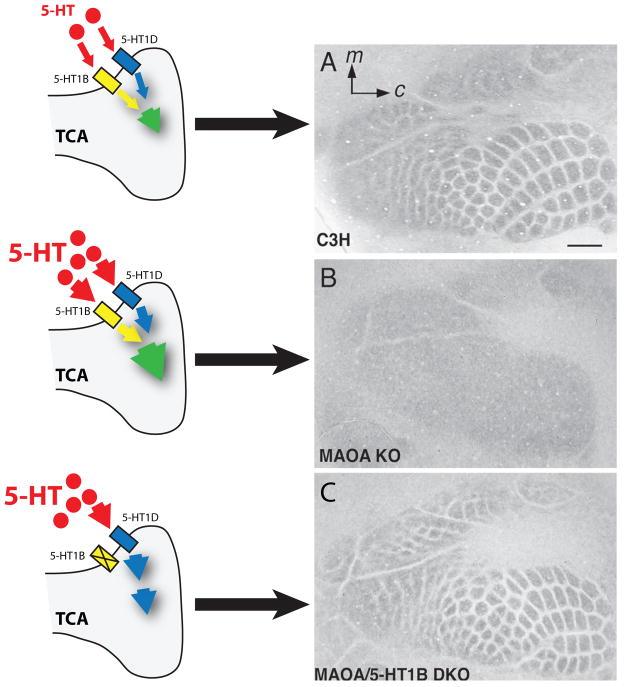Figure 3.
Potential mechanism by which increased extracellular serotonin (5-HT) in the MAOA-KO mice affects cortical barrel field (BF) formation. (A), in wild type (C3H; C3H/HeJ background) mice 5-HT signals simultaneously through both 5-HT1B and 5-HT1D receptors, which are transiently expressed by thalamic neurons and present on axon terminals (see text). (B), increased extracellular 5-HT concentration in the MAOA-KO mice leads to over-activation of 5-HT1B and 5-HT1D receptors, and to an absence of clear BF formation as observed at P7 in flattened cortex preparations stained with a 5-HT antibody. (C), in the absence of 5-HT1B receptors (MAOA/5-HT1B –Double KO), the MAOA-KO phenotype is rescued, suggesting that residual 5-HT signaling is sufficient for normal BF formation, despite the increased extracellular 5-HT concentration. Since BF patterning is not altered in 5-HT1B-KO mice (see text), the model proposes that 5-HT1D receptors may provide sufficient signaling for normal BF formation in the absence of 5-HT1B receptors, with or without elevated extracellular 5-HT concentration. BF formation (right panels) was visualized in flattened cortex preparations stained with CO histochemistry.

